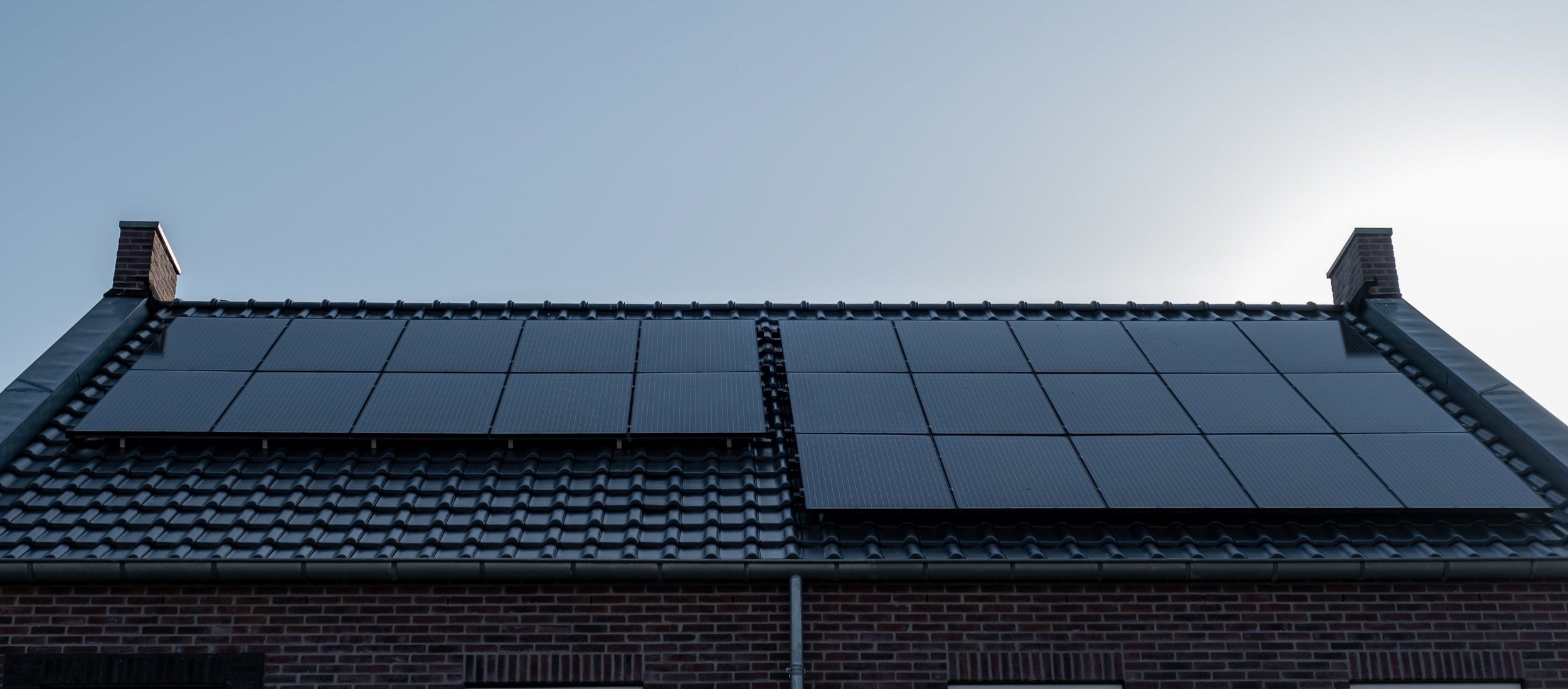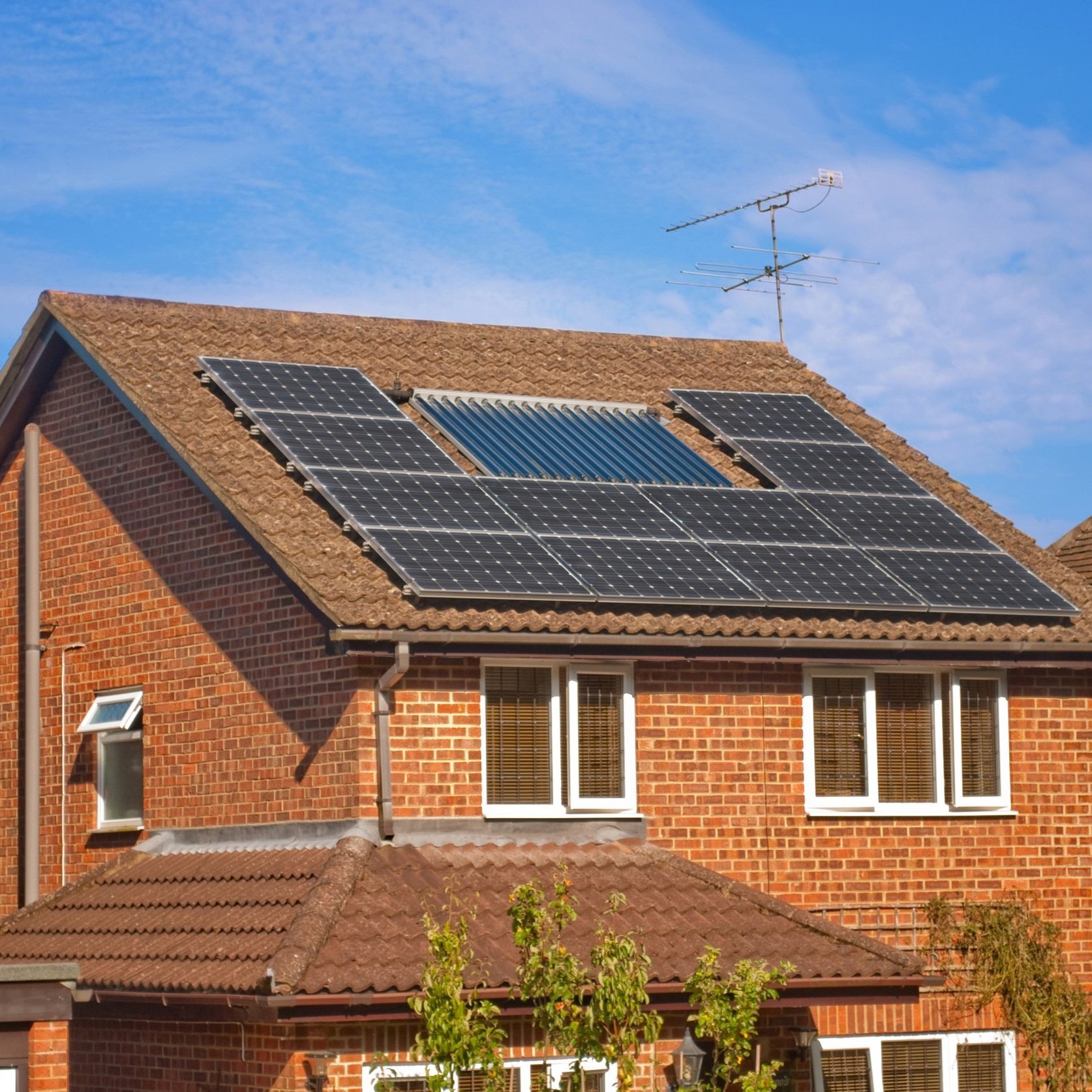
On-site Renewables & Storage
The Feed-In Tariffs (FIT) scheme has ended but Solar Photovoltaic panels are still the most popular renewable energy for homes.
Solar Photovoltaic panels
Photovoltaic (PV) panels are the most common renewable energy generation used on smaller buildings. PV panels generate DC electricity that is then usually passed through an inverter that converts this to AC for use in the home or export to the grid. It then passes through a generation meter.
In some cases there is an export meter that tells you how much energy you haven’t used, but in most cases the amount used on site is deemed to be 50%.
Getting PV to pay for itself, now that the Feed-In Tariffs (FIT) scheme has ended, requires more effort to replace electricity you have to buy.
Installing time switches on appliances and simply altering daily timetables to turn things on when the sun is out are very useful.

Energy generation with solar photovoltaic panels is currently the most common way for homes to upgrade with on-site renewables.
Battery storage
Battery storage is not renewable energy in itself but they can be used to store off peak cheap electricity from the grid for use at peak times.
Prices have started to fall dramatically meaning that a battery and/or PV package as part of of a retrofit is looking more feasible to help on the journey to zero carbon .
Battery storage is likely to be biggest game-changer in the way electricity is used, stored and distributed that we have seen for decades.



